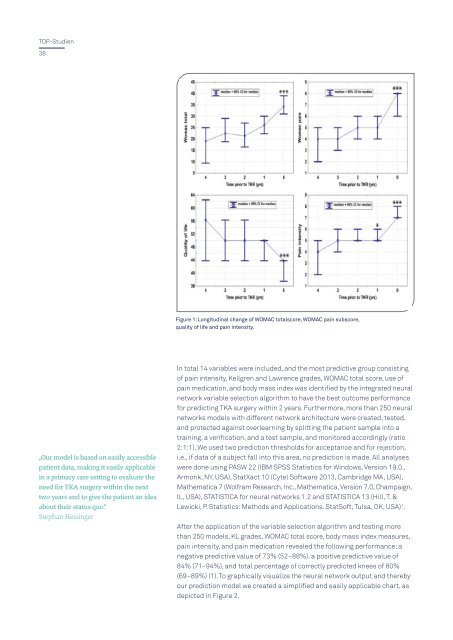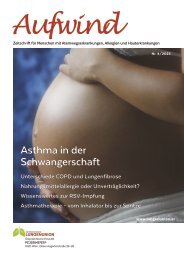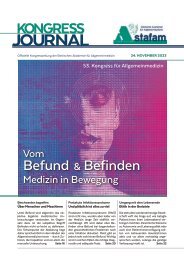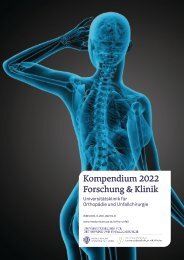Kompendium 2020 Forschung & Klinik
Das Kompendium 2020 der Universitätsklinik für Orthopädie und Unfallchirurgie von MedUni Wien und AKH Wien (o. Univ.-Prof. R. Windhager) stellt einen umfassenden Überblick über die medizinsichen Leistungen und auch die umfangreichen Forschungsfelder dar. Die Veröffentlichungen zeigen die klinische Relevanz und innovative Ansätze der einzelnen Forschungsrichtungen. Herausgeber: Universitätsklinik für Orthopädie und Unfallchirurgie MedUni Wien und AKH Wien Prof. Dr. R. Windhager ISBN 978-3-200-07715-7
Das Kompendium 2020 der Universitätsklinik für Orthopädie und Unfallchirurgie von MedUni Wien und AKH Wien (o. Univ.-Prof. R. Windhager) stellt einen umfassenden Überblick über die medizinsichen Leistungen und auch die umfangreichen Forschungsfelder dar. Die Veröffentlichungen zeigen die klinische Relevanz und innovative Ansätze der einzelnen Forschungsrichtungen.
Herausgeber: Universitätsklinik für Orthopädie und Unfallchirurgie
MedUni Wien und AKH Wien
Prof. Dr. R. Windhager
ISBN 978-3-200-07715-7
Create successful ePaper yourself
Turn your PDF publications into a flip-book with our unique Google optimized e-Paper software.
TOP-Studien<br />
38<br />
Figure 1: Longitudinal change of WOMAC totalscore, WOMAC pain subscore,<br />
quality of life and pain intensity.<br />
„Our model is based on easily accessible<br />
patient data, making it easily applicable<br />
in a primary care setting to evaluate the<br />
need for TKA surgery within the next<br />
two years and to give the patient an idea<br />
about their status quo.“<br />
Stephan Heisinger<br />
In total 14 variables were included, and the most predictive group consisting<br />
of pain intensity, Kellgren and Lawrence grades, WOMAC total score, use of<br />
pain medication, and body mass index was identified by the integrated neural<br />
network variable selection algorithm to have the best outcome performance<br />
for predicting TKA surgery within 2 years. Furthermore, more than 250 neural<br />
networks models with different network architecture were created, tested,<br />
and protected against overlearning by splitting the patient sample into a<br />
training, a verification, and a test sample, and monitored accordingly (ratio<br />
2:1:1). We used two prediction thresholds for acceptance and for rejection,<br />
i.e., if data of a subject fall into this area, no prediction is made. All analyses<br />
were done using PASW 22 (IBM SPSS Statistics for Windows, Version 19.0.,<br />
Armonk, NY, USA), StatXact 10 (Cytel Software 2013, Cambridge MA, USA),<br />
Mathematica 7 (Wolfram Research, Inc., Mathematica, Version 7.0, Champaign,<br />
IL, USA), STATISTICA for neural networks 1.2 and STATISTICA 13 (Hill, T. &<br />
Lewicki, P. Statistics: Methods and Applications. StatSoft, Tulsa, OK, USA) 1 .<br />
After the application of the variable selection algorithm and testing more<br />
than 250 models, KL grades, WOMAC total score, body mass index measures,<br />
pain intensity, and pain medication revealed the following performance: a<br />
negative predictive value of 73% (52–88%), a positive predictive value of<br />
84% (71–94%), and total percentage of correctly predicted knees of 80%<br />
(69–89%) (1). To graphically visualize the neural network output and thereby<br />
our prediction model we created a simplified and easily applicable chart, as<br />
depicted in Figure 2.
















